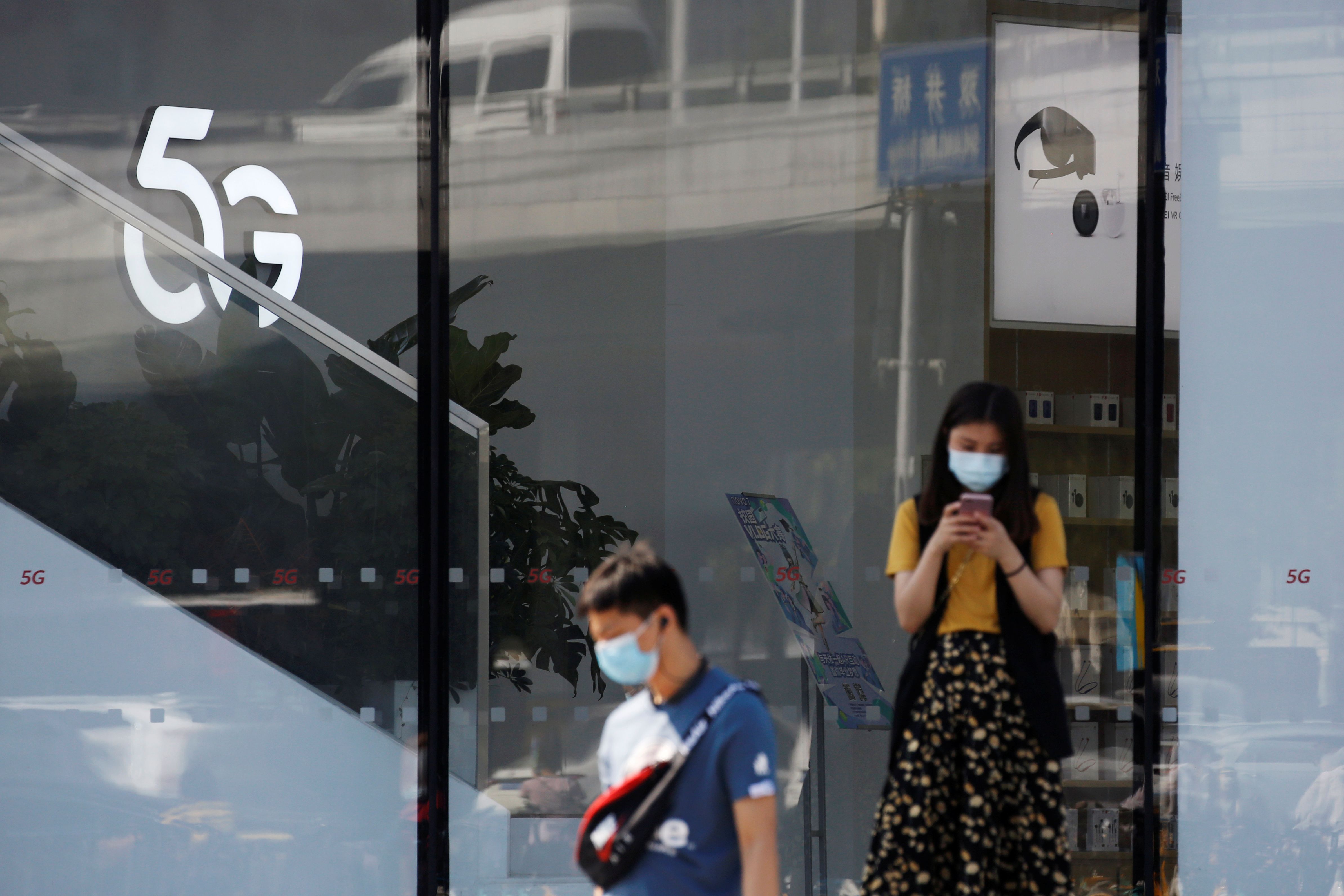China’s Digital Silk Road: Economic and Political Significance

China announced the DSR in 2015 as part of its Belt and Road Initiative (BRI). It is primarily intended to support the expansion of major Chinese companies such as Huawei, ZTE, and Alibaba into new markets and gaining access to big data. It complements the “Made in China 2025” strategy, which aims to make China the leader in modern technologies. DSR activities are not only initiated by the Chinese government but also by companies, which often seek to integrate their commercial projects into the DSR framework to obtain political and financial support.
Elements of the DSR
One key area is the development of telecommunications infrastructure, in particular 5G networks. Chinese companies, mainly Huawei and ZTE, are significant players in this market. Shenzhen, where Huawei has its headquarters, was the world’s first city fully covered by a 5G network. Huawei is involved in 5G projects in Pakistan, Nigeria, Russia, Serbia, Cambodia, Thailand and elsewhere. An important element is the expansion of the optical fibre system, supporting new connections between Asia, Africa, and Europe (the PEACE project).
China’s leader Xi Jinping pointed out that big-data analysis, cloud computing, and smart cities are key DSR technologies. China Mobile opened a datacentre in Singapore in 2019, and Alibaba has recently opened centres in Japan and Indonesia. Alibaba provides cloud computing in South Korea, Singapore, and other places, and also is developing its e‑commerce platform—Aliexpress.com, used in Southeast Asia and Latin America, among other areas. Huawei participates in the implementation of smart cities projects, including in Kenya, Saudi Arabia, and Serbia. Moreover, in June China completed its Beidou satellite navigation system. It competes with the American GPS and European Galileo systems. Beidou is intended to encourage governments and companies to use Chinese telecommunications and space services, including geolocation. The DSR also includes projects related to other areas of the “fourth industrial revolution”—artificial intelligence (AI), telemedicine, blockchain technology, etc. China is also striving to create a payment mechanism that will compete with the world’s most popular system, SWIFT, which in its view is connected to the U.S.
Opportunities and Challenges
The DSR is a response to the needs of many countries, especially developing ones. It aims to support them in their digital transformation and enables improvements in the living standards of the population, such as increased access to telecommunications. Chinese companies’ offers in 5G and other technological solutions are often attractive in pricing, partly because of extensive financial support from Chinese banks. Chinese companies also have complementary offers (e.g., hardware and software), which ensures comprehensive solutions. However, there are significant concerns about security, raised mainly by the U.S., which views technologies offered by China, especially 5G, as means for espionage. This stems from the requirement placed on Chinese companies to cooperate with China’s authorities on security matters. Developing countries in Asia or Africa, though, are focused primarily on the costs of implementing technology, which favours the selection of Chinese suppliers. This attitude has not changed despite high-profile events, such as data leakage detected in 2018 from servers at the headquarters of the African Union Commission, whose supplier was Huawei.
Another concern about the DSR is the potential of countries that participate in it becoming dependent on China. This applies both to technology supply and financing, and may come in the form of political pressure, Chinese influence on shaping regulations in DSR countries, as well as a deepening of their debt problem—one of the main accusations against the entire BRI. Chinese companies also have been taking over companies in the new technology sector in DSR countries, for example, the Ant Group (an Alibaba subsidiary responsible for electronic payments) has invested in numerous entities offering innovative financial solutions (“fintechs”).
China is also accused of technological authoritarianism, such as the export of monitoring technologies for wide use, which are particularly emphasised under the Chinese version of smart cities (also promoted as “safe cities”). According to Huawei, its solutions in this area have been implemented in more than 100 cities in over 30 countries. Besides normal uses, these technologies, including facial recognition and surveillance, can be used to monitor political activists, as is the case of the Uighurs in China’s province of Xinjiang. As such, these are particularly attractive solutions for authoritarian governments, and Chinese systems (mainly Huawei) have been purchased by the authorities in Uzbekistan, Kazakhstan, and Tajikistan, among others. As AI develops, these technologies can be used to build a system of control over citizens.
Conclusions and Perspectives
In the coming years, the development of the DSR will be one of the priorities of China’s foreign policy aimed at gaining a technological advantage over the U.S. It likely will increase China’s political influence in the world and its military capabilities (e.g. via Beidou). The acceleration of digitisation during the pandemic has been an additional argument by China to strengthen activity in this area. The effects of the pandemic, though, may be a problem in the implementation of the DSR, as the public finances of many countries have deteriorated and may induce them to renegotiate agreements. Restricted access for Chinese companies to American technologies may also be a serious obstacle. In addition, China’s reluctance to accept obligations regarding data flows and protection (for example, rules mandated by the Asia-Pacific Economic Cooperation forum), as well as the possibility of new security breaches in host countries, may limit the development of the DSR.
China, however, will seek to promote its technology and data-flow standards, as expressed in the document “China Standards 2035” (the Chinese authorities state that they have already signed agreements with 49 countries and regions on this matter), and in its “Global Initiative on Data Security”, initiated in September. China supports the concept of so-called “sovereign cyberspace”, which it views as state control over internet content and data transfer. China also has an idea to create a new institution under its aegis that would promote Chinese solutions in this area. This would create tension over the idea of an open and free internet, which is supported by the EU, the U.S. and other countries. This could lead to a digital decoupling of China from the U.S. and its allies. The solution could be setting global standards (including in 5G), for example, by the International Telecommunications Union. However, this organisation is currently headed by a Chinese national, a circumstance which may undermine its impartiality.
The European Union, while pursuing its own digital strategy, is cautious about cooperation with China on technological issues. Based on EU guidelines (what it calls a “toolbox”), many Member States are blocking or hindering the participation of Chinese companies in the creation of their 5G network (e.g., France, Belgium, Sweden), although in some states, cooperation with China is ongoing (e.g., in Hungary). Chinese companies are often the strongest competitors to European suppliers (in 5G technology, the Chinese compete with Nokia and Ericsson). In this context, it is important that EU companies—in cooperation with entities from other countries, such as South Korea, Japan, or the U.S.—create an attractive offer both in price-quality ratio and data security, possibly through joint research and development projects. This could encourage countries involved in the DSR to diversify their suppliers. The EU can also use “digital development assistance” (training and equipment delivery). Poland, which is in the process of amending its act on cybersecurity, could limit the possibility of Chinese entities to participate in telecommunications investments, which would be in line with the EU’s overall cautious approach to China’s technological initiatives. Diversification of technology suppliers, joint actions of the EU and its allies, as well as promotion of European solutions on the world market would be beneficial for Poland, both in security and the potential for the participation of Polish companies with other EU companies in tenders.


